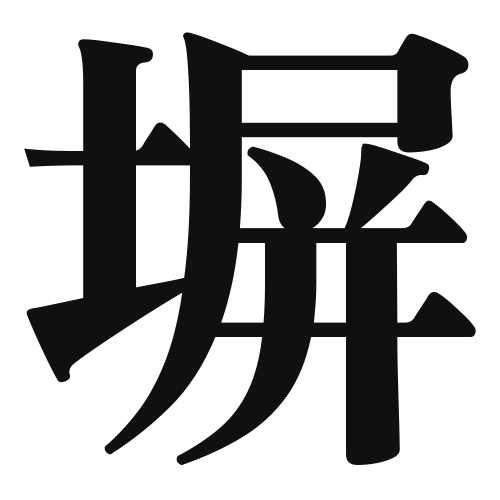1. Overview of Meaning
The kanji “塀” (pronounced “hei”) means “fence” or “wall.” It refers to a structure that encloses an area, providing privacy or security.
2. Formation and Radical
Formation of the Kanji: The kanji “塀” is a compound character that combines elements representing earth and a boundary. It is formed from the radical for earth (土) and the character for “boundary” (部). This reflects its meaning as a structure made of earth or materials that enclose a space.
Radical: The radical of “塀” is 土 (tsuchi), which means “earth” or “ground.” This radical is commonly found in kanji related to land or construction.
3. Examples of Usage
Common Words and Phrases:
- 塀 (へい, hei) – fence
- 塀の外 (へいのそと, hei no soto) – outside the fence
Example Sentences in Daily Conversation:
- 「私の家の塀は高いです。」(Watashi no ie no hei wa takai desu.) – “The fence of my house is tall.”
- 「塀の外に猫がいます。」(Hei no soto ni neko ga imasu.) – “There is a cat outside the fence.”
4. Synonyms and Antonyms
Similar Kanji:
- 壁 (かべ, kabe) – wall: While “塀” refers specifically to a fence, “壁” refers to a wall that is typically part of a building.
Antonyms:
- 開放 (かいほう, kaihō) – openness: This term refers to the state of being open or unconfined, which contrasts with the enclosing nature of a fence.
5. Cultural and Historical Background
Relation to Japanese Culture: Fences and walls have significant cultural importance in Japan, often symbolizing boundaries between private and public spaces. They are commonly seen in traditional Japanese gardens and homes.
Proverbs and Idioms: One common saying is “塀の中の生活” (hei no naka no seikatsu), which translates to “life inside the fence,” often referring to a sheltered or confined lifestyle.
